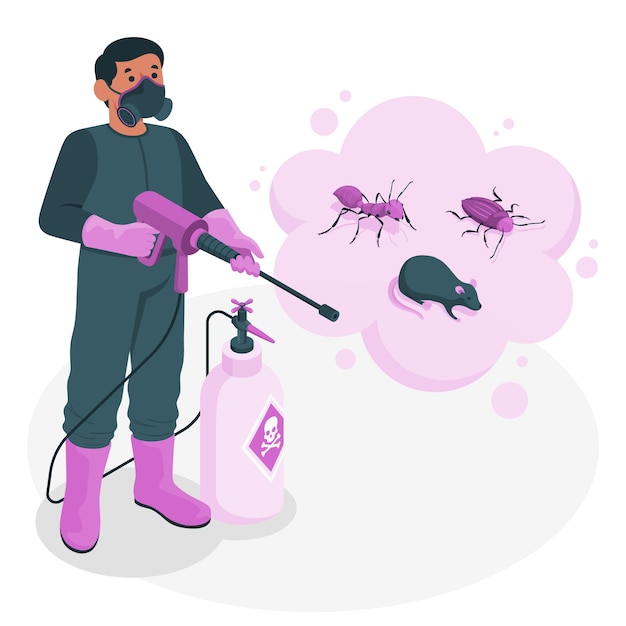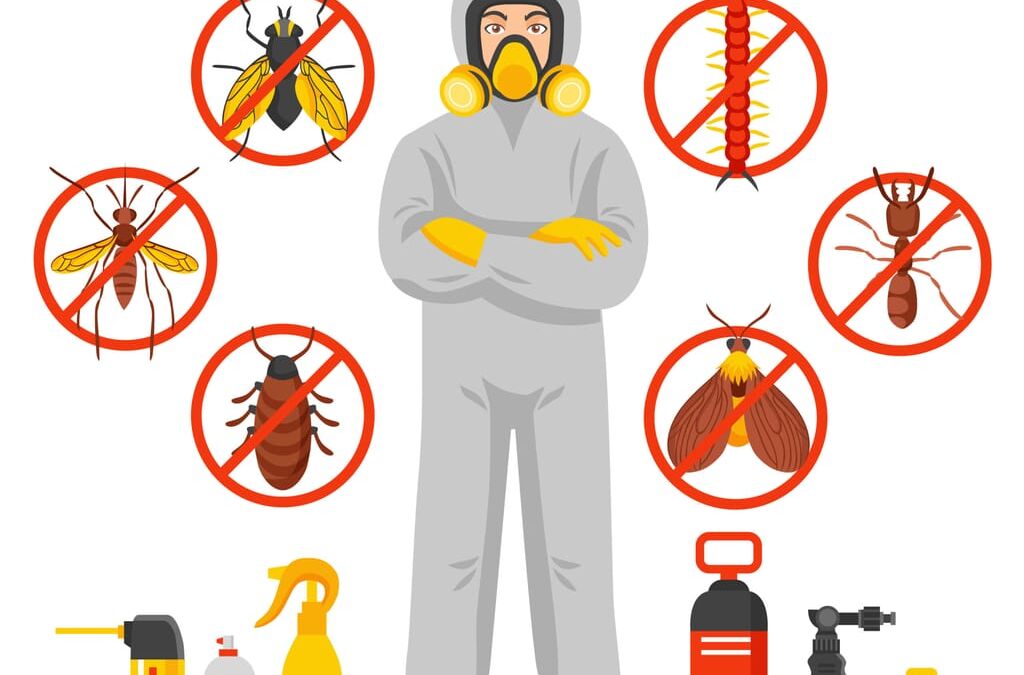Expert Pest Control Service Coquitlam: Protect Your Home from Invaders
Wiki Article
Safe and Trusted Insect Control for Lasting Protection
Efficient parasite administration calls for a diverse strategy that balances eco-friendly honesty with the demand for efficient parasite suppression. The subtleties of these methods might not be instantly clear, triggering a more detailed examination of the methods that can lead to lasting insect control end results.Recognizing Pest Control Techniques
Parasite control incorporates a selection of methods focused on handling and eradicating unwanted pests and rats that can intimidate both health and property. Comprehending these techniques is crucial for efficient parasite management.
The primary classifications of bug control approaches include mechanical, biological, and chemical methods. Mechanical approaches entail physical barriers and traps to stop parasite access and capture unwanted varieties. Utilizing screens on windows or utilizing sticky traps can substantially decrease parasite populations without introducing hazardous substances - exterminator coquitlam.

Chemical parasite control is typically the most identified approach, utilizing chemicals to eliminate parasites. These chemicals can be efficient but have to be utilized with caution to stay clear of negative results on non-target species and the atmosphere.
Benefits of Eco-Friendly Solutions
Just how can eco-friendly services change bug control methods? The fostering of environment-friendly bug control approaches supplies numerous benefits, substantially improving the performance and safety and security of parasite management.
An additional benefit is the positive effect on regional biodiversity. Environment-friendly solutions are designed to target certain insects while preserving valuable bugs and wildlife, advertising a balanced ecosystem. This strategy lines up with the growing customer demand for sustainable techniques, enhancing the credibility of pest control providers.
Integrated Bug Management Approaches
The execution of environment-friendly services normally leads to the adoption of Integrated Pest Administration (IPM) strategies, which better improve insect control efficiency. IPM is an alternative strategy that integrates multiple techniques to manage pest populations while decreasing ecological influence. This method stresses the use of biological, social, mechanical, and chemical controls, making certain a lasting and balanced method of parasite management.One basic aspect of IPM is the detailed evaluation of parasite activity and environmental problems. By monitoring bug populaces and identifying their life cycles, experts can execute targeted interventions that interfere with the pest's habitat or lifecycle, minimizing dependence on chemical pesticides. Additionally, cultural methods such as plant rotation and habitat control can substantially diminish insect facility and recreation.
Another vital component is the use of organic control representatives, such as beneficial insects or bacteria, which can naturally reduce pest populations. When chemical applications are required, IPM focuses on making use of low-risk chemicals and uses them uniquely, decreasing direct exposure to non-target microorganisms and humans.
Incorporating IPM strategies not only improves insect control efficiency however likewise promotes a safer environment, lining up with the expanding demand for lasting practices in pest management.
Safe Practices for Homeowners
Understanding the importance of secure techniques in parasite control can encourage house owners to successfully handle insect issues while safeguarding their wellness and the setting. Carrying out non-toxic methods and safety nets is critical in decreasing exposure to hazardous chemicals.Property owners should initially assess their setting for conditions that draw in pests, such as standing food, water, and mess waste. Routinely cleansing and sealing entrance points can prevent pests from getting into the home. Utilizing natural deterrents, such as crucial oils or diatomaceous earth, can offer effective options to chemical pesticides.
When chemical therapies are required, home owners ought to select products that are especially labeled as secure for domestic usage. It is vital to adhere to application standards carefully to prevent too much exposure. Furthermore, utilizing targeted therapies in locations where parasites are identified, rather than blanket splashing, can dramatically reduce chemical use.
Finally, preserving open communication with bug control specialists is essential. Home owners should ask about the safety of products used and request environmentally friendly options whenever possible. By taking on these risk-free methods, house owners can produce a healthier living atmosphere while effectively managing pest concerns.

Tips for Long-Term Defense
Developing an insect monitoring approach that highlights lasting security can considerably improve the effectiveness of the safe techniques formerly gone over. To accomplish this, homeowners should apply routine evaluations of their home, concentrating on hidden locations such as attic rooms, basements, and crawl rooms. webpage Early detection of pest task is important in preventing problems from taking hold.Additionally, preserving a clean setting is important. This consists of appropriate food storage space, without delay cleaning up spills, and routinely throwing away waste. These methods minimize attractants that draw bugs into the home. Sealing entrance factors, such as cracks around doors and home windows, can effectively obstruct potential bug access.
Landscape design must likewise be thought about; keeping plants cut and maintaining a range between vegetation and the home reduces hiding places for insects. Using all-natural deterrents, such as crucial oils or diatomaceous planet, can further dissuade invasions without turning to rough chemicals.
Last but not least, teaming up with a professional insect control service for periodic assessments can supply an added layer of security. These experts can offer customized referrals and advanced therapies, making sure that your home stays protected versus parasites in the lengthy term.
Verdict
Finally, trusted and secure bug control needs a complex technique that highlights green approaches and incorporated insect management. By carrying out natural deterrents, conducting regular examinations, and keeping appropriate sanitation, homeowner can considerably lower bug populations while protecting advantageous insects and the setting. Partnership with professional parasite control services improves the effectiveness of these approaches, making sure tailored options that offer lasting protection and comfort versus future infestations.Effective parasite administration calls for a diverse approach that stabilizes ecological stability with the need for reliable insect reductions. The adoption of green insect control approaches provides countless benefits, dramatically enhancing the efficiency and safety of bug management.The execution of environment-friendly solutions normally leads to the adoption of Integrated Insect Management (IPM) methods, which further improve parasite control efficacy. exterminator coquitlam. By checking pest populations and recognizing their life cycles, practitioners can carry out targeted treatments that interrupt the bug's habitat or lifecycle, decreasing dependence on chemical pesticides.In verdict, safe and trustworthy bug control calls for a multifaceted method that stresses green methods and integrated insect administration
Report this wiki page